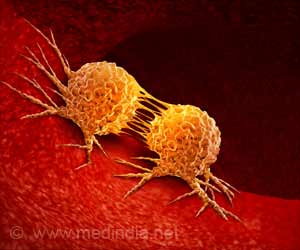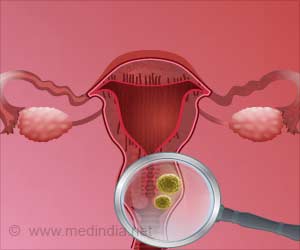Breast cancer development is induced by laminin - a structural support protein.

The team has shown that the addition of laminin-111 leads to quiescence in breast epithelial cells through changes in nuclear actin.
"We found that high levels of laminin-111 depleted nuclear actin and this in turn induced cell quiescence," Bissell says.
"Furthermore, this process can be prevented if a form of actin that can not exit the nucleus is introduced. Under these conditions the cells do not stop growing even in the presence of laminin."
"However, just giving laminin back to cancer cells was not enough to make them normal so other factors are clearly also involved and one such factor we now know is how laminin-111 and nuclear actin talk to each other!"
The researchers believe that the interaction between laminin-111 and nuclear actin could provide a new target for diagnostic therapeutic efforts, but this will require further study.
Advertisement
Source-ANI















